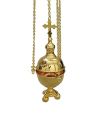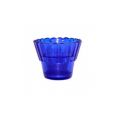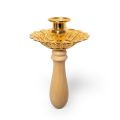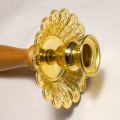This website uses cookies to ensure you get the best experience on our website. Read more
Wokshop of Ceramic goods
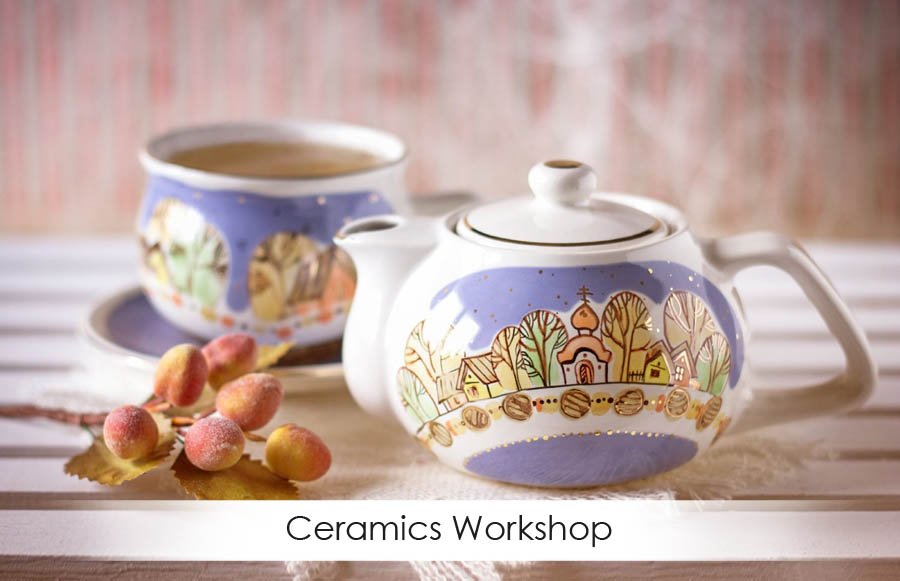

The art of ceramics is one of the most ancient crafts, the authenticity and beauty of which is truly fascinating. Artifacts made from clay have always been very popular. They are especially nourishing for the soul if they are made with love and prayer, just as it is the case with the ceramic products of the ceramic workshop of St Elisabeth Convent. The artisans who work in the ceramics workshop of the Convent combine various ancient techniques (glaze, decal, scratching) and a number of modern technologies and tools. The items of the ceramic workshops have become renowned throughout the world. So what are the secrets of our technology?
Overglaze Painting. Unlike the unique “scratching”, overglaze painting is a traditional method of decorating ceramics and is well-known all over the world. The technology of overglaze painting consists of several stages: the item undergoes two rounds of firing, and then an artist decorates it with special fireproof paints. Later this decoration is fixtured by firing it once again. The process of painting on the surface of a ceramic piece resembles watercolor painting to a certain extent.


However, the paints are diluted with turpentine, rather than water. The process of overglaze painting seems easy but in fact, even a person who knows how to paint has to spend months of hard work in order to master this technique. The overglaze ceramics made in our Convent is unique because, unlike many enterprises, we do not use a limited set of pre-composed ornaments. The ceramic workshop does have a rich selection of illustrations, though: flowers, Angels, birds, animals, insects, landscapes and architecture...
There are many illustrations for children as well. Nevertheless, despite having plenty of well-developed designs, we do not follow the templates “dot-to-dot”. This is what makes the works of the ceramic workshop of St Elisabeth Convent different from mass production. It gives the artist an opportunity to be creative, and it allows people to obtain unique and diverse artefacts with handmade decoration. After firing the item for the third time, it is almost finished and it comes to the hands of the gilder who makes the last strokes. It is thanks to his work that the paintings on ceramics sparkle with gold or silver.


Relief Decoration. The technique of painting on wet enamel is traditional and has existed for a long time. The ceramic workshop of St Elisabeth Convent uses its own method of doing it, which is usually referred to as “scratching”. Scratching is our unique technique of ceramics decoration on wet enamel. It is not suitable for mass production because it consists of too many operations and technologies. However, each rule has its exceptions. One painter who worked at the ceramic workshop of St Elisabeth Convent shared the technique that he had invented with others. Years passed, and this technology grew into a well-established tradition”
This is how this kind of decoration is made: an artisan takes a bisque-fired and enamel-glazed item and scratches the contours of a painting on it, using a sharp needle. This technique calls for accuracy and proper feeling of proportions because the contours must be clean and strong. Then the artisan uses brushes and colour enamels in order to fill the areas limited by the contour lines. There is a great diversity of colours (enamels, salt solutions, metal solutions, pigments). The colours differ in their composition, texture, and plasticity. When wet, these materials have different colours, hues and textures from what we get after the firing.


This scrupulous and demanding process requires not only knowledge and skill but also constant attention in order to achieve good final result. During the second firing the scratched contours are revealed, the glaze melts and acquires its typical glitter and expressive colour.The next stage is gilding. The gilder uses gold solution to add some final details where necessary. After the third, i.e., the final, firing, you have a finished item. Gilding makes pottery and souvenirs look luxurious and festive and crowns the decoration of flowers, birds and animals, summer and winter landscapes, Angels.
Decal. Production of exquisite decals is one of the most thriving fields of work for the ceramic workshop of St Elisabeth Convent. We offer a wide range of products and services in this field: design development and production of ceramics, making items to order as well as creating works of art in accordance with individual designs.


High quality of our products is ensured by a combination of original painting and graphics made by our artists and hi-tech equipment Bohonow, as well as using German pottery paints Heraeus and expensive components with addition of gold and silver. With the help of these components that the potteryware receives the glittering surface that attracts one's eyes. The cost of making decals on a ceramic item depends on its size, colours, and number of copies.
Acryl Painting. This kind of painting allows to make the brightest and the most multicoloured items. Acryl painting requires skill and talent, just like all other techniques. Using acryl paints, an artist is able to get the most out of painting. The items made in this technique are especially highly valued because they are handmade from the start till the end.




